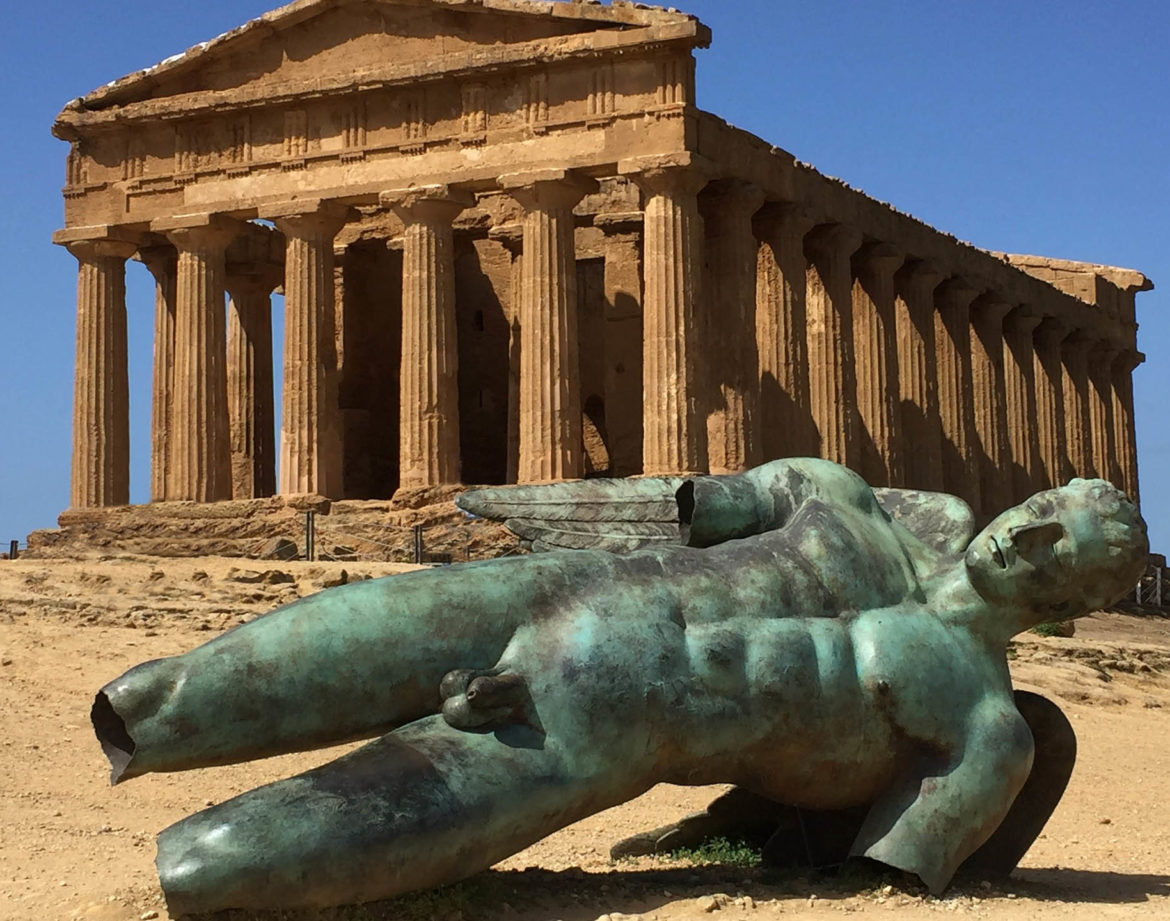Agrigentois a place of rare beauty, where you can admire testimonies belonging to various periods of its history. Speaking of the oldest period of the Sicilian city, it is impossible not to mention the Valley of the Temples. It is one of the most important archaeological parks in Sicily, included by Unesco in the list of assets that are part of the World Heritage Site. Let’s get to know its history and the temples that are part of it in detail.
History of the park
The origin of this archaeological park dates back to when the Greek city of Akragas stood in the territory of today’s Agrigento. During the regency period of Falaride, the first tyrant of the city, it was fortified and developed thanks to the construction of many temples, among other things. The growth of the city continued with the tyrant Theron since, during his mandate (488-471 BC), the polis extended to the top of the island. In this period the temple of Olympian Zeus was built, to celebrate the victory in Himera (Greek colony in Sicily) in 480 BC. on the Carthaginians.
These and other events generate over time the so-called Valley of the Temples, which will then experience various vicissitudes. In 406 BC the fire by the Carthaginians took place in the 1st century BC. the restoration by the Romans takes place and subsequently they are again damaged due to earthquakes. Furthermore, during the period of Christian domination, most of the pagan temples in the area were destroyed.
Some of these temples turned into another type of building. An emblematic case is the Temple of Concord, which became a Church in the 6th century AD. thus escaping destruction. In other cases, historical material was taken from the temples to enrich other buildings, as happened with the Church of San Nicola which was also built thanks to what was present inside the Temple of Olympian Zeus.
Beyond the various changes that have taken place, the Valley of the Temples has established itself as one of the main attractions of the area, capable of attracting many tourists every year.
The main temples: The Temple of Concord
Among the main works of the archaeological park of the Valley of the Temples there is undoubtedly the Temple of Concordia. Built in the 5th century BC on a high promontory, it allows you to admire a breathtaking landscape made up of the surrounding hills.
It is one of the best preserved temples over time, regardless of the passing of the years and the devastation that has occurred to other nearby buildings. Despite being built with friable materials, it remains one of the temples belonging to the ancient age that have remained in the best conditions. A discourse that does not only concern the Agrigento area, but all the buildings dating back to that era.
Its name derives from an inscription in Latin found near the structure by the historian Fazello, who lived between 1490 and 1570. There are no references to any deities to whom it may have been dedicated.
One of the reasons that made it more solid than other temples is its transformation into an Orthodox church in the sixth century AD, thanks to which there was an adaptation to the needs of Byzantine structures and the consequent strengthening of the foundations.
The interior of the temple has undergone changes over the years, such as the elimination of the pagan altar and the construction of a wall in its place. On the outside, however, you can see the imposing Doric-style colonnade built on a stone base.
The Temple of the Dioscuri
Equally important is the Temple of the Dioscuri, also from the 5th century AD. and dedicated to the Argonauts Castor and Pollux. It can be said that, more than other buildings, it represents the emblem of the city of Agrigento. It is said that these two characters, called Dioscuri or “sons of Zeus”, went in search of the golden fleece.
Unlike the aforementioned temple, that of the Dioscuri was almost totally destroyed. The only part that has remained intact is that of the entablature, placed over four columns that were rearranged in the nineteenth century.
The part of the entablature is very decorated: a clear sign that the temple was rich in ornaments (from sculptures to other elements with symbolic value). A couple of examples are represented by lion heads (which were supposed to drive away the forces of evil) and small palm trees, which instead propitiated triumph and victory.
Based on the testimonies found on the spot, it is assumed that the temple was built on a previous sacred place dedicated to Demeter, Persephone and Dionysus.
The temple of Olympian Zeus
Already mentioned above, it was built to thank Zeus who had propitiated the victory against the Carthaginians. Precisely the prisoners belonging to this population were used for the construction of the structure.
The Temple of Jupiter represents one of the largest sacred constructions ever built, with its height of 113 meters and its width of 56.
Worthy of note is the presence of the Telamons or Atlantes (7.61 m high), huge statues with human features that were placed in the upper part of the colonnade.


Comment (0)